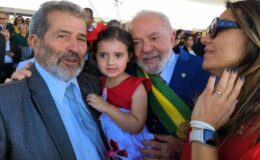Ugly immigrants find East Tennessee to their liking
- By : Assessoria de Comunicação do Deputado Gonzaga Patriota
- Category : Clipping
What’s a flock of muscovy ducks native to Central America and northern South America doing at the Pellissippi State Technical Comm unity College pond in Hardin Valley?
These ducks are unquestionably ugly, with warty growths, goose bumps and fleshy knobs on their featherless, bare skinned, red faces. Where did these overweight, multicolored monstrosities come from?
Wild muscovies are blackish with white wing patches. They’re very handsome with beautiful glossy green and purple feathers. But after generations of captive breeding for their meat, the mixed up red, white, black and brown domestic versions often look grotesque.
canada goose
canada goose jacket
canada goose sale
canada goose outlet
canada goose parka
canada goose coats
Canada Goose online
www.ecanadagooseonline.top
ecanadagooseonline
In the late 1400s, Columbus noted West Indian natives with domestic ducks as large as geese. When Spanish conquistadors invaded South America in the early 1500s, the Indians already kept huge wild caught ducks in captivity for food.
Muscovy ducks were imported into Europe by 1550 and England by 1670.
They were popular fare at dinner tables in Europe and North America until their replacement by Peking ducks.
Some ornithologists think the name “Muscovy” may be a corruption of the name of the Indian tribe among whom Spanish explorers first encountered the duck. The Miskito Indians of Nicaragua and Muisca Indians of Colombia are possibilities.
Another account says the ducks were named after the Muscovy Co. an exploration and trading company initially focused on trade between England and the region around Moscow known as Muscovy. Supposedly, when the company imported the super sized ducks into Europe, the company name was attached to the ducks like a brand name.
A third explanation claims the name is derived from a mistaken belief that the ducks produce musk and their skin smells musky. Muscovy ducks used to be called “musk ducks.”
The Latin genus name “Cairina” may mean the specimen used to first describe and name the species came from Cairu, an island in Brazil.
Cairo, Egypt, was not a likely source. The species name “moschata” means related to a strong musky smell.
Domesticated muscovy ducks were introduced into many parts of the world as a source of meat. Today, they’re served as a delicacy by fancy restaurants in big cities.
In 1966 four muscovy ducks from Paraguay and 97 from Venezuela were deliberately introduced into the wild in Florida. Whether any survived and reproduced to start small feral flocks like those in the southeast today is unknown. Muscovies most certainly escaped from captivity and successfully bred in the wild through the years.
There are now feral breeding flocks of these non native ducks. You may find muscovies at local waterfront and pond locations where people feed tame mallards and Canada geese. Muscovies mate with mallards to produce real weirdos.
Some muscovy ducks are so tame you can walk right up to them. In fact, they’ll probably walk right up to you anticipating you might have an edible treat to hand out.










Nenhum comentário